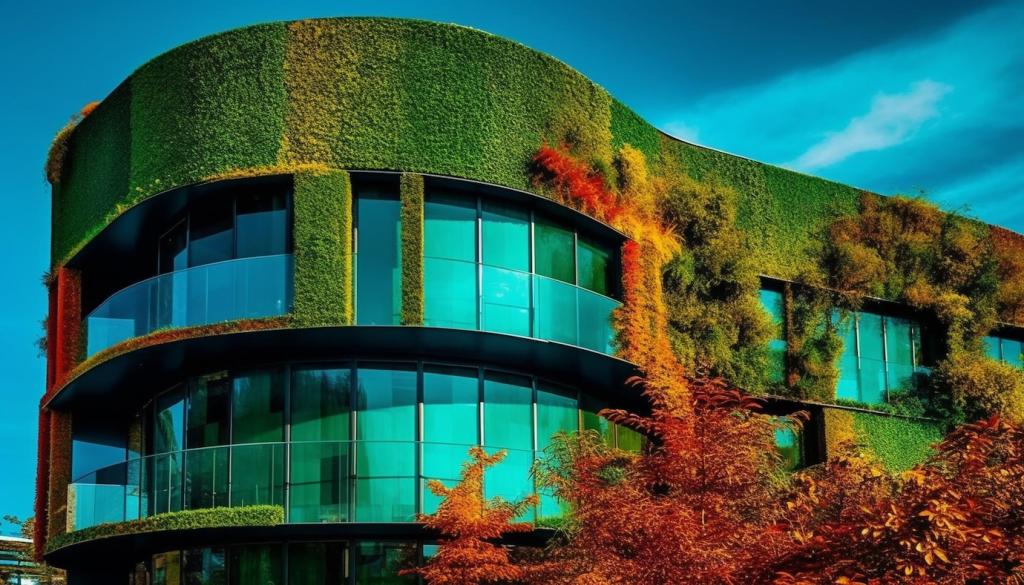Trends and Predictions for Green Urban Development
The landscape of urban development is undergoing a transformative shift as cities worldwide grapple with environmental challenges and the demand for healthier, more sustainable living environments. Green urban development focuses on integrating ecological principles, smart technologies, and inclusive practices into city planning. As urban populations swell and climate concerns become increasingly urgent, emerging trends and forward-looking predictions are redefining how cities are built, operated, and experienced. This page explores the key directions shaping the future of green cities, illuminating the strategies and innovations that promise to make urban living both sustainable and resilient.

Smart Cities and Digital Innovation
Urban Data Analytics for Sustainability
Cities are increasingly utilizing data analytics to track energy consumption, air quality, waste patterns, and transportation flows. By analyzing real-time and historical data, municipal leaders can make informed decisions that reduce emissions and maximize resource efficiency. Predictive analytics enable proactive maintenance of infrastructure and identify opportunities for energy savings. These methods also aid in monitoring the effectiveness of green policies, ensuring that initiatives are fine-tuned for continuous improvement. The availability of interconnected data systems fosters collaboration across departments, reinforcing adaptive urban management and transparency for residents.
IoT-Enabled Infrastructure
The Internet of Things (IoT) is revolutionizing how urban infrastructure operates, driving efficiency in everything from street lighting to water management. Smart sensors embedded in buildings, roads, and utilities enable automatic adjustments based on real-time conditions, minimizing waste and energy usage. For example, responsive HVAC systems in offices and homes learn occupancy patterns to optimize heating and cooling, while smart meters allow citizens to monitor and adapt their consumption habits. As IoT adoption becomes paramount, the seamless integration of these technologies will support urban environments that are not only green but also responsive to changing demands.
Digital Platforms for Citizen Engagement
As cities prioritize sustainability, digital platforms are emerging that empower citizens to participate in green initiatives. Mobile apps and online portals help residents report issues, provide input on planning efforts, and access sustainability incentives. Gamified experiences encourage behavior changes, such as reducing car use or increasing recycling. Open data portals ensure that progress is transparent, enabling community-driven solutions and accountability. The result is an ecosystem where technology not only supports efficiency but also strengthens community engagement and environmental stewardship.
Green Roofs and Vertical Gardens
Green roofs and vertical gardens are gaining traction as effective tools for boosting urban biodiversity and regulating city microclimates. These living installations absorb rainwater, filter air pollutants, and provide habitats for pollinators and birds, while simultaneously insulating buildings and reducing energy needs. In dense metropolises, these systems transform underutilized surfaces into thriving green spaces, connecting residents with nature. Municipal policies are increasingly recognizing the role of vegetated façades and rooftops in mitigating the urban heat island effect, making their inclusion a key prediction for future development.
Restoration of Urban Waterways
Restoring rivers, streams, and wetlands within city limits represents an emerging trend that yields significant environmental and recreational value. Revitalized waterways help manage stormwater, reduce flood risks, and improve water quality by filtering pollutants naturally. These areas also serve as critical wildlife corridors and offer green recreational spaces for residents. Innovative urban projects are reclaiming canalized streams and concrete channels to foster aquatic biodiversity and reconnect citizens with their waterfront heritage, signifying a shift towards cities that embrace their natural assets.
Urban Forest Expansion and Connectivity
Expanding tree canopies and establishing green corridors are proven strategies for enhancing urban resilience and livability. Urban forests help lower temperatures, sequester carbon, and provide shade, all of which contribute to public health and comfort. Cities are focusing on planting climate-adapted species, linking fragmented habitats, and involving communities in stewardship programs. As tree-planting campaigns and forest connectivity become more sophisticated, their impact extends beyond aesthetics, supporting mental well-being and safeguarding urban ecosystems against the pressures of development.
Sustainable Transportation and Mobility
01
Cities around the globe are investing in electrified public transit as a cornerstone of sustainable mobility. Electric buses, trams, and trains produce fewer emissions and operate more quietly than their conventional counterparts, contributing to cleaner air and less noise pollution. Upgrades to charging infrastructure, route optimization, and investment incentives are accelerating adoption by metropolitan transit authorities. The electrification trend is expected to expand, catalyzing the decarbonization of entire metropolitan transport systems while making mass transit more attractive to a larger segment of the population.
02
Urban planners are prioritizing walkability and bike-friendliness as key strategies for reducing reliance on cars. By expanding pedestrian zones, building dedicated bike lanes, and improving urban amenities, cities are making active transportation safer and more convenient. These efforts promote public health, foster local economies, and cut carbon emissions. The movement toward human-centered design anticipates a future where urban mobility is synonymous with accessibility, safety, and environmental stewardship, redefining how citizens experience their cities.
03
Mobility-as-a-Service (MaaS) is emerging as a transformative concept in green urban mobility. By consolidating transportation options—buses, bikes, car shares, and more—into seamless, app-based platforms, MaaS offers convenient, low-carbon alternatives to private car ownership. These platforms integrate ticketing, real-time information, and personalized recommendations, enabling smarter travel decisions. As MaaS ecosystems mature, their scalability and flexibility are expected to play a central role in shaping sustainable urban transport and reducing the overall environmental footprint of mobility.
